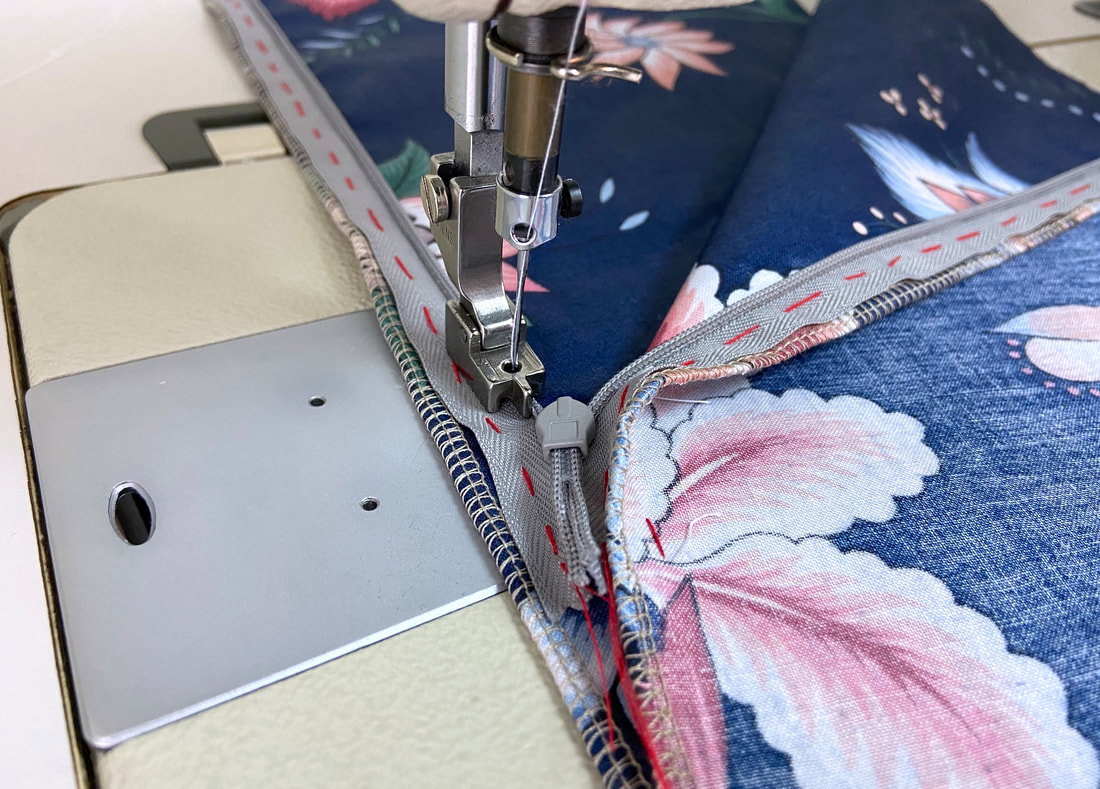Mini Tutorial: How To Sew An Invisible Zipper Application
1. Start by finishing each seam edge individually prior to aligning and pinning the zipper. Use the clean-finishing technique of your choice. In this case, a serging stitch is used to encase the fabric raw edges.
Open the zipper and align the left zipper tape with the left seam edge placing it face down on the garment's right side. Insert pins perpendicularly to keep the edges aligned.
Before you move on to machine stitching the zipper, it helps to replace the pins with a temporary hand basting stitch as this will increase stability and comfort during the machine stitching process.
Open the zipper and align the left zipper tape with the left seam edge placing it face down on the garment's right side. Insert pins perpendicularly to keep the edges aligned.
Before you move on to machine stitching the zipper, it helps to replace the pins with a temporary hand basting stitch as this will increase stability and comfort during the machine stitching process.
2. Starting at the top, place the zipper coils into the corresponding invisible zipper foot slot and insert the needle into the crease created by the zipper tape fold.
3. As you stitch, this specialized presser foot keeps the zipper coils lifted and tape unfolded - this ensures that the stitch is applied evenly behind the coils but not so close that it restricts the zipper's functionality.
4. Align the other zipper portion to the second seam edge and hand baste the zipper to secure. The second zipper portion should be aligned at exactly the same location along the seam as the first one. When the zipper is closed, the top and bottom horizontal seam edges should align perfectly.
5. Repeat the stitching process by guiding the zipper coils through the other presser foot slot. Invisible zippers are always stitched from the top down, ending the stitch as close as you can to the zipper slider located at the bottom.
6. Once the zipper is attached, use a seam ripper to remove all hand basting stitches.
Align the bottom portion of the seam as you would any regular seam: face sides touching and edges aligning.
Insert pins perpendicularly through both fabric layers. Make sure to move the bottom of the zipper tape away from the garment to encourage the seam edges to lay as flat as possible.
Align the bottom portion of the seam as you would any regular seam: face sides touching and edges aligning.
Insert pins perpendicularly through both fabric layers. Make sure to move the bottom of the zipper tape away from the garment to encourage the seam edges to lay as flat as possible.
7. Starting at the bottom of the existing zipper stitch and using a regular zipper foot (so you can stitch right next to the zipper coils), stitch the seam at the designated seam allowance. If the bottom of the seam is extra long, you should switch to a regular presser foot once you've stitched a few inches from the zipper's bottom.
8. Iron the bottom of the seam with the seam allowance layers open. It is always easiest to iron from the wrong side of the seam as pictured above.
The completed invisible zipper should blend and disappear into the seam with only the zipper tab visible at the top. The transition from zipper to the rest of the seam at the bottom should be smooth and well, invisible.










